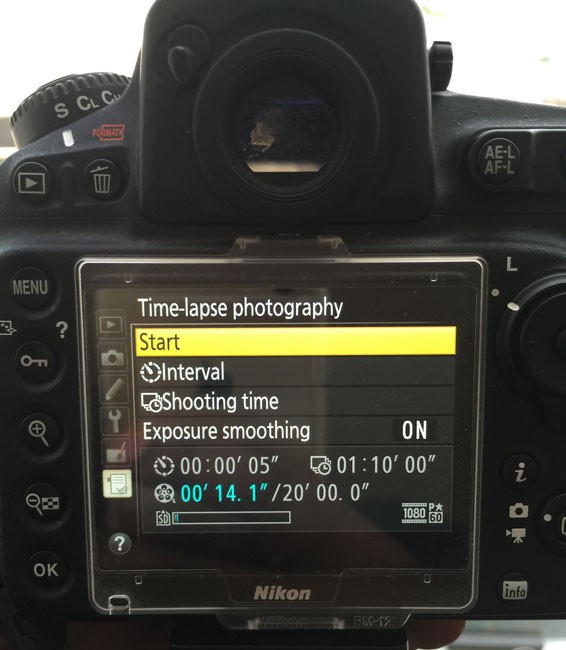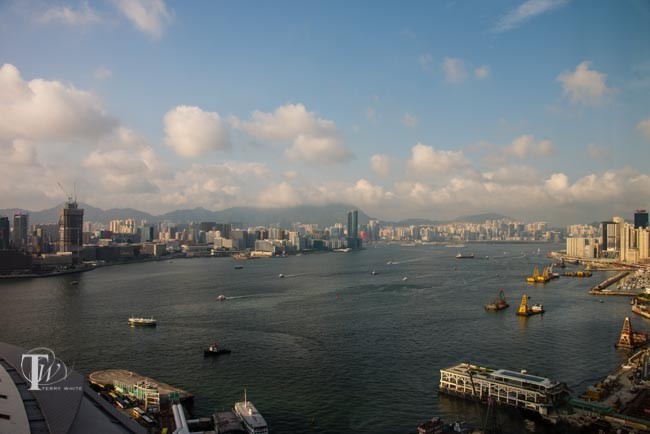
As a portrait and fashion photographer I rarely have to worry about weather because I’m usually shooting in studio and controlling the lighting and environment. However, when I travel I become a travel/landscape photographer and just let me admit that it’s way way way more challenging. The 3rd stop on my Adobe tour took me to Hong Kong. Since it was my first trip to Hong Kong and I had plenty of time (a week) I was in no rush to go out shooting on day one. I arrived late Friday evening and on Saturday it looked like the shot above.
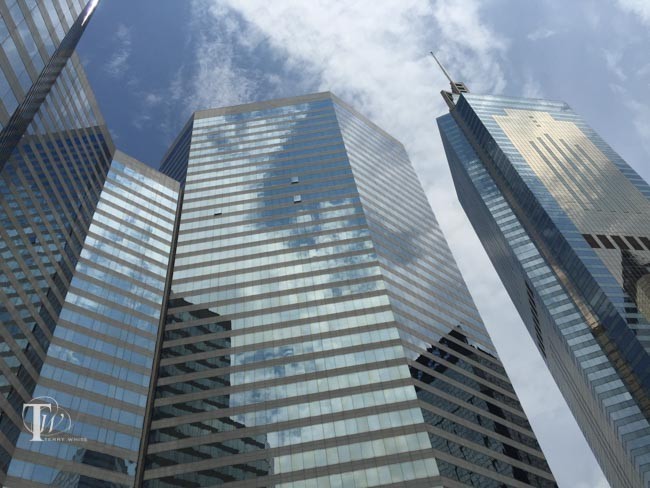
I went out for lunch and captured the above shot with my iPhone 6 Plus. Nothing special, just looking up and snapping a pic. I enjoyed lunch by the pool an thought, “wow! what a great weekend!” Well it all came to an end on Sunday. On Sunday it started raining and well it never really stopped.
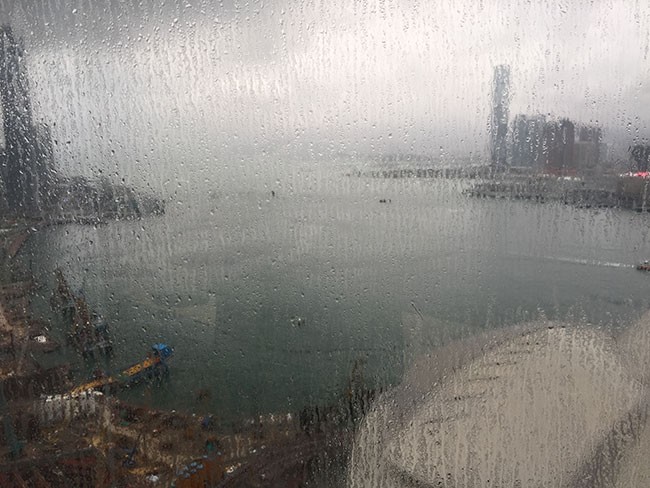
I booked a city tour for Monday morning and it rained the entire time. That’s when I realized that:
- Don’t procrastinate. If you can get out and shoot on a good day, DO IT! Had I gone out on the same tour on Saturday I would have had a fantastic day for capturing the city.
- You have to make the most of shooting in crappy weather. If the weather is not going to change by the time you leave an iconic location, then you have to do your best to get some good shots.
In my case I figured I can’t make it stop raining, so therefore I would shoot things that are supposed to be wet. My tour took me to “The Peak” first and quite frankly it was a disaster for shooting with pouring rain conditions:
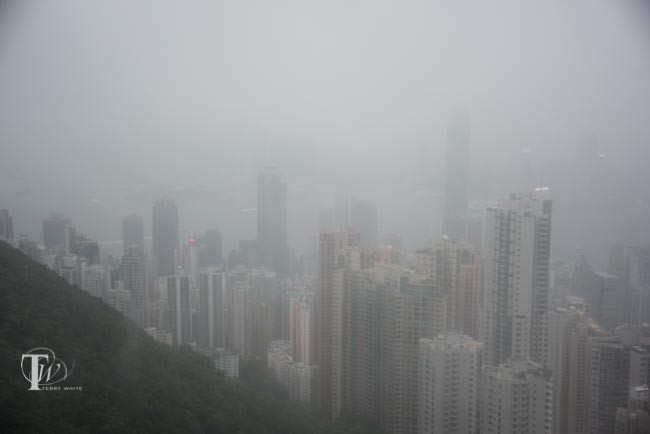
This is the shot I got from The Peak while it was pouring rain.
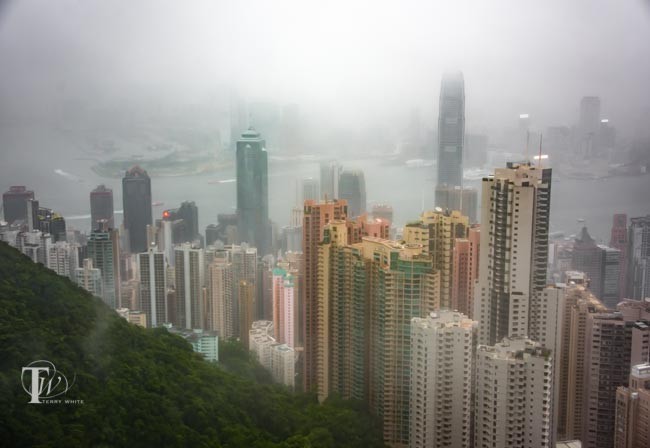
While the NEW Dehaze feature in Lightroom CC does wonders and with a few adjustments I was able to get something that was somewhat usable, it was clearly not my best work and didn’t do the scene justice.
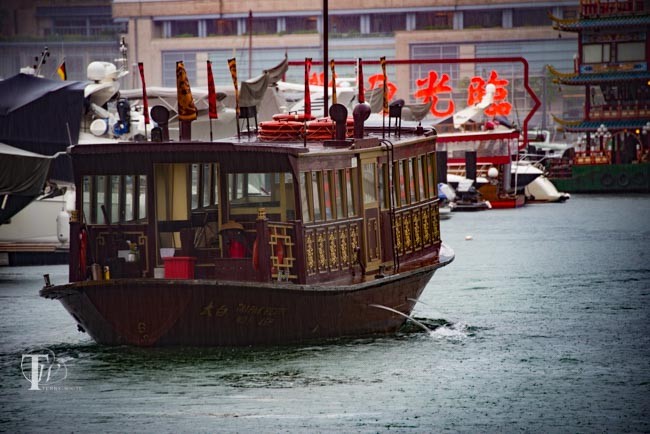
Later in the tour we went to fishing villages and that’s when I applied my theory of shooting things that are ok if they’re wet. I got one of my favorite shots above.
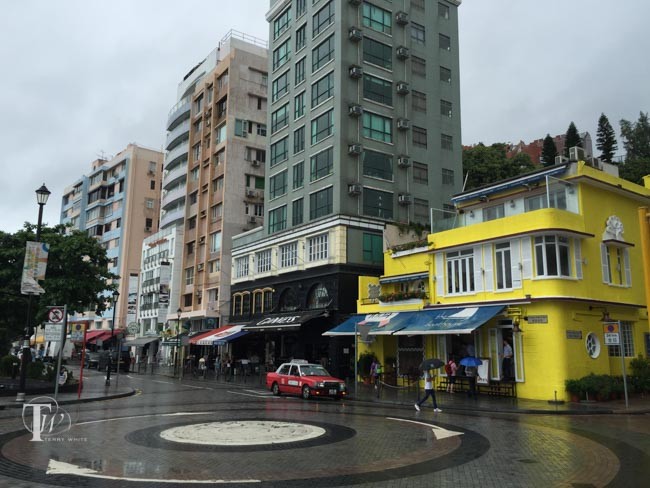
Take the opportunity to shoot the local community interacting with the elements. In the case of rain perhaps target a sea of umbrellas in an urban setting, the cars going by and splashing puddles of water. Had I brought my macro lens I probably would have focused in on the drops of water on the leaves.
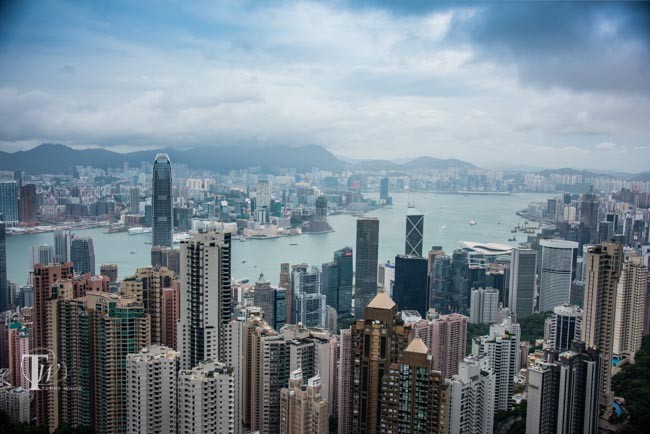
Luckily the weather did clear up for a few hours on Tuesday and I didn’t hesitate to go back to The Peak as well as taking the Star ferry over to Kowloon to capture Hong Kong from the other side.
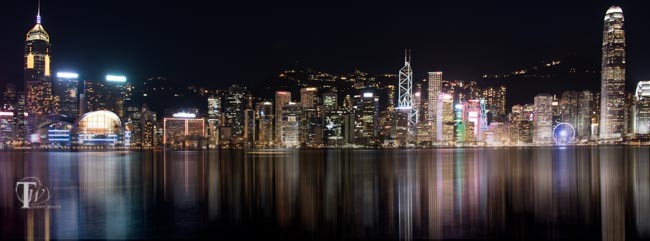
The Bottom Line
If you’re going to shoot, shoot! Don’t take chances that the weather will be just as good tomorrow as it is today. If you are just stuck with bad weather, think of creative ways to shoot outside your comfort zone. Work the weather to your advantage.
Going to Photoshop World 2015 in Vegas?

If so you can SAVE $50 by registering here with the Discount Code: TerryWhite50





